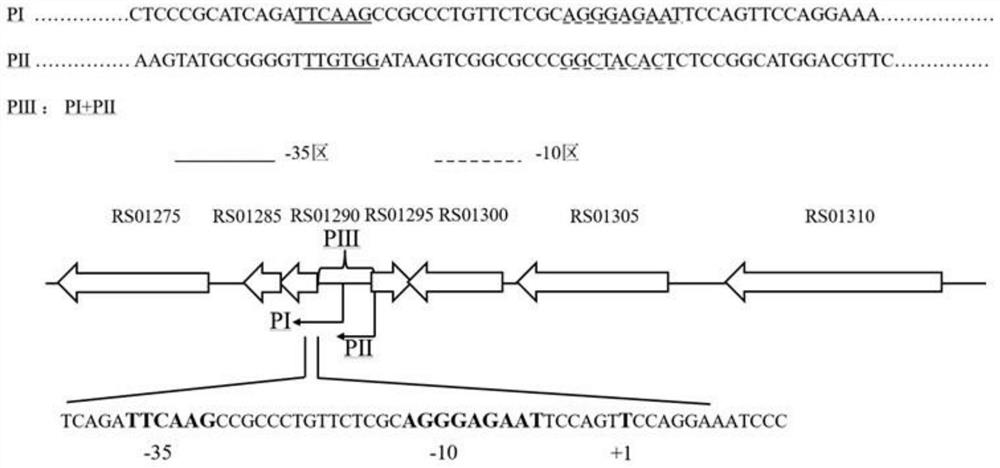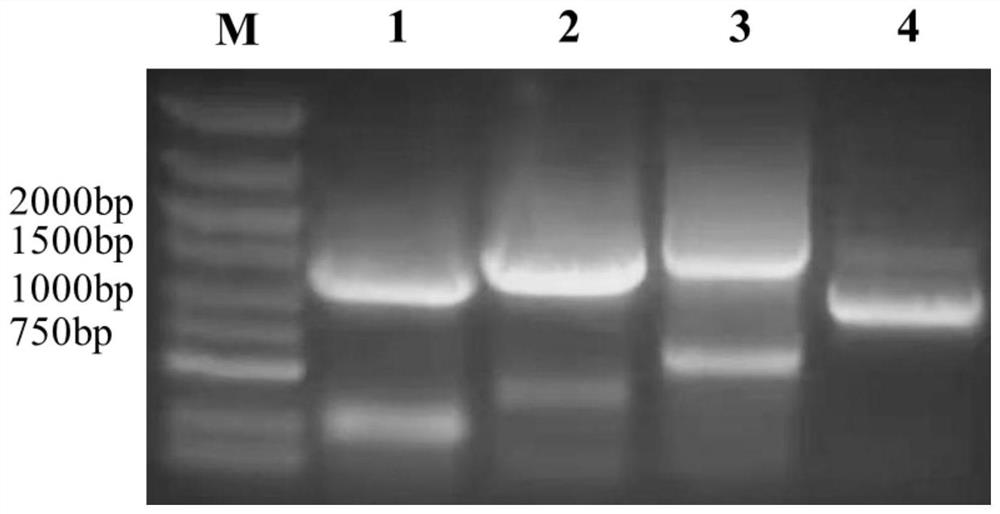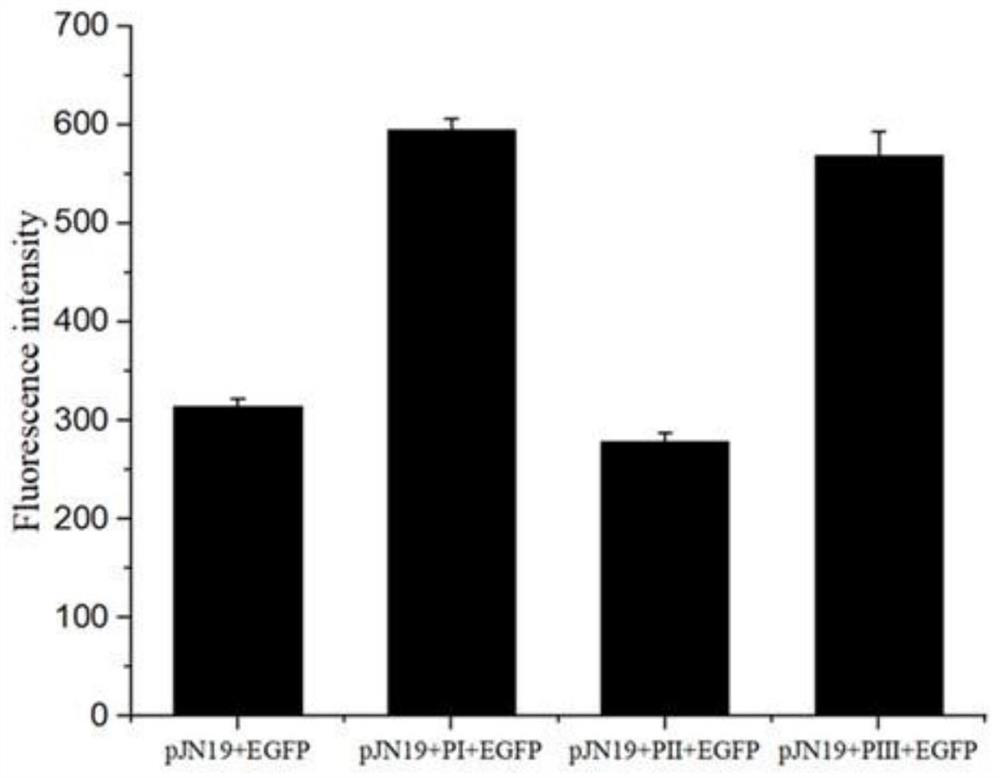Acidithiobacillus caldus-sourced EpsRAc transcriptional regulation factor and application thereof in copper oxidation tolerance
A transcriptional regulator, tolerance technology, applied in the fields of biochemistry and molecular biology, can solve the problems of copper ore grade decline, high energy consumption and environment
- Summary
- Abstract
- Description
- Claims
- Application Information
AI Technical Summary
Problems solved by technology
Method used
Image
Examples
Embodiment 1
[0032] Example 1: Determination of the epsR promoter
[0033] (1) Promoter prediction: In order to determine the promoter of the epsR gene, the A. caldus epsR gene (nucleotide sequence such as SEQ ID NO. 1) including the upstream sequence, ranging from genomic nucleotides 251,431 to 258,533. The possible promoters of this region were predicted using the softberry BPROM website, and the prediction results were as follows figure 1 As shown, each promoter contains -35 region (TTGACA) and -10 region (TATAAT) which are relatively conserved in biological sense.
[0034] The predicted promoter is located between the epsR gene and ACAty_RS01295, such as figure 1 , the genes adjacent to the epsR gene are also shown in figure 1 In addition, it also contains information such as the -35 region and the -10 region of the PI promoter.
[0035] PI (SEQ ID NO.3):
[0036] TGTGTGCTCACACGATGAACATGGGCACGAGCATAGGGTGTCTGTTGCTGGAGTGTCAAGTTGCGGAGCTCTGGCGTTTATTACCCCAAGGGCAACATGCCGGATCTCCCGCATCAGA...
Embodiment 2
[0051] Example 2: Participating in the transcriptional regulator EpsR Ac Heavy metal ion specificity of regulatory processes
[0052] Therefore, the pJN19-Pro-EGFP series recombinant plasmids were constructed, and the promoter fragment and epsR gene were introduced into the pJN19-EGFP plasmid together, and the expression level of EGFP fluorescent protein was studied to study the transcriptional regulatory factor EpsR. Ac Heavy metal ion specificity of regulatory processes. Include the following steps:
[0053] (1) Construction of pJN19-Pro-EGFP series recombinant plasmids: the predicted promoter gene and epsR gene were fused by homologous recombination (the promoter gene was directly connected to the epsR gene) and inserted into the plasmid pJN19-EGFP (the promoter gene Insert the epsR gene into the pJN19-EGFP vector between the EGFP and PstI restriction sites), construct the recombinant plasmid, transform the recombinant plasmid into E.coli DH5α, culture until a single colo...
Embodiment 3
[0057] Example 3: Transcription Regulator EpsR Ac Effects on copper tolerance of Escherichia coli
[0058] To explore EpsR Ac In the application of copper resistance, the epsR gene is introduced into Escherichia coli, and its function is verified, including the following steps:
[0059] (1) Construction of the recombinant plasmid pRSFDuet-1-epsR: Taking the genomic DNA of the type strain A.caldus ATCC 51756 as a reference, the epsR gene was introduced into the BamHI and SalⅠ sites of the plasmid pRSFDuet-1 by homologous recombination, and the recombinant plasmid pRSFDuet-1-epsR was introduced into Escherichia coli BL21, named BL21-epsR, and primers UP-1 and Down-1 were used to detect whether the gene was introduced, and the nucleic acid gel electrophoresis picture was as follows Figure 5 , the primer sequences are as follows:
[0060] UP-1: GGATCTCGACGCTCTCCCCT,
[0061] Down-1: GATTATGCGGCCGTGTACAA;
[0062] (2)EpsR Ac Effect on copper tolerance of Escherichia coli: ta...
PUM
 Login to View More
Login to View More Abstract
Description
Claims
Application Information
 Login to View More
Login to View More - R&D
- Intellectual Property
- Life Sciences
- Materials
- Tech Scout
- Unparalleled Data Quality
- Higher Quality Content
- 60% Fewer Hallucinations
Browse by: Latest US Patents, China's latest patents, Technical Efficacy Thesaurus, Application Domain, Technology Topic, Popular Technical Reports.
© 2025 PatSnap. All rights reserved.Legal|Privacy policy|Modern Slavery Act Transparency Statement|Sitemap|About US| Contact US: help@patsnap.com



